// LUNA-ONE Residence Introduction
This project embraces 4 main pillars, Modularity, Adaptability, Self Assembly & Individuality. We have created modular components for this project that can adapt to the different circumstance on the moon, can be self assemble using robot fabrication, and can both cater to mass production and mass customization. In this way, we can celebrate the individuality of the moon colony residents.
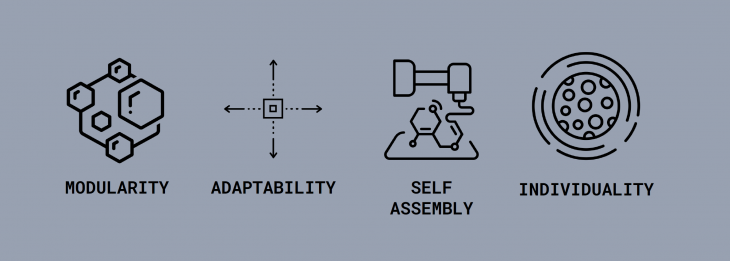
4 main pillars of Luna-One Residence project
// Parts That Make A Whole
We made the decision at the start of the project to work with how to combine modularity and individual parts to form the entire system using WASP aggregator. The modular part consists of 3 different scales, micro scale – individual identical part, meso scale – parts relationship and macro scale – community aggregation. With this aggregation system in place, the system is flexible and the community is able to grow and evolve according to the needs of the users.
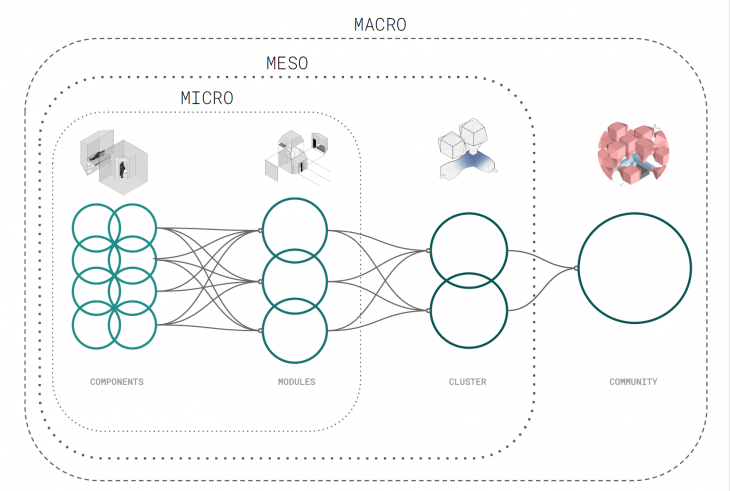
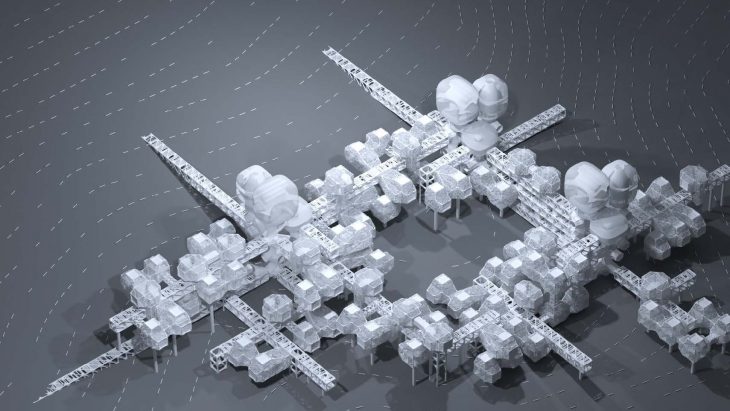
Luna-One Community Aggregation
// Project Workflow
The project follows through a parametric grasshopper flow that is interfaced by Human UI, enabling all consultants in the project easy control and manipulation of data. WASP Aggregator grasshopper plug-in is utilized to create the colony from the number of parts according to the colony requirements. The data from the colony aggregation then gets pushed to structural analysis on Karamba and solar radiation analysis on Ladybug. The final chosen aggregation gets sent over to documentation on Revit using Rhino.Inside. This project workflow was created to enable seamless collaboration between different roles in the project.
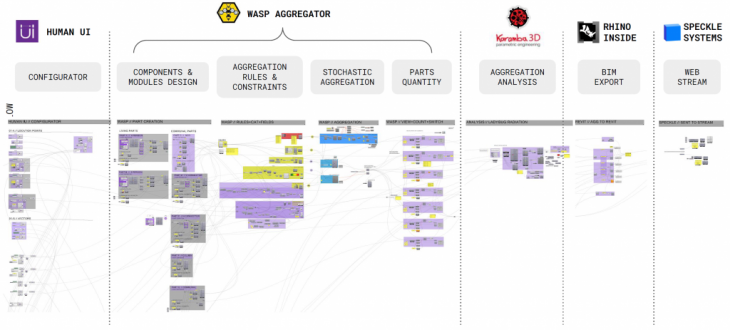
Parametric Project Workflow
// Roles and Responsibilities with in the Workflow
To test the efficiency of the workflow, we created a project scenario that involves 4 different roles, the client, designer/architect, engineer and the digital fabricator. These roles provides various different data inputs along the project timeline.
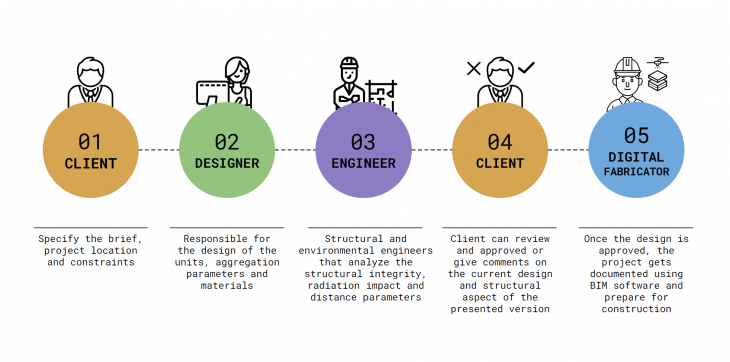
In this scenario, the clients will initiate the project with the initial project brief which gets passed on to the designer to create the parts and form a colony aggregation. The aggregation then gets passed on to the engineers to run performance analysis. The analysis can be sent back to the architects to make improvements. When this process is done, the aggregation design can be sent back to the clients for review. Any changes by the clients can be easily adapted in this workflow because of the way the system is organized in a continuous loop. New information can be added along the way by any role and changes can be easily merged using the Human UI configurator . When it is approved, the final aggregation is sent to BIM and the Digital Fabricator.
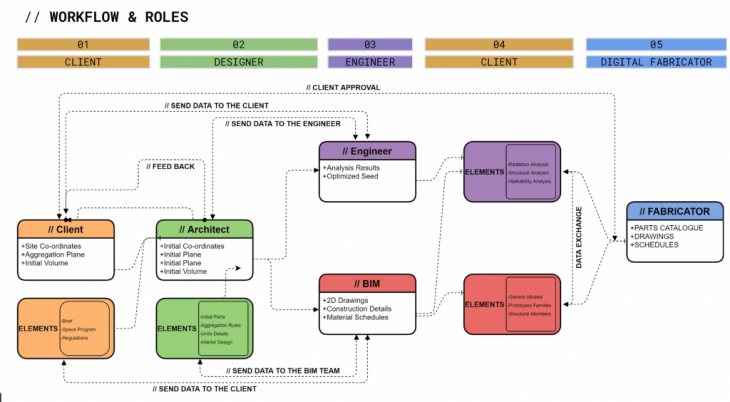
// Speckle Streams & Branches
We use Speckle Systems, a web-based interoperability platform to share data between the key roles in this project. Being web-based and program agnostic, this platform is easy to use for the clients and other consultants that might not have access to similar software programs. Some streams are further divided into branches to enable a smoother transfer for data that might be too large or complex.
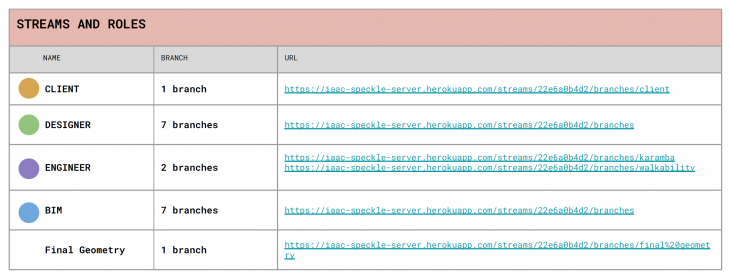
Speckle streams & branches in the Luna-One Project
// Ease of Use & Viewing
In the images below, you can see the interfaces within this workflow. For all the different roles and steps, the data is being input via the Human UI configurator. Data is being received and sent via the Speckle receiver in Grasshopper and directly viewed either on Rhino – for architects, Web stream – for clients or Revit – for the digital fabricator.
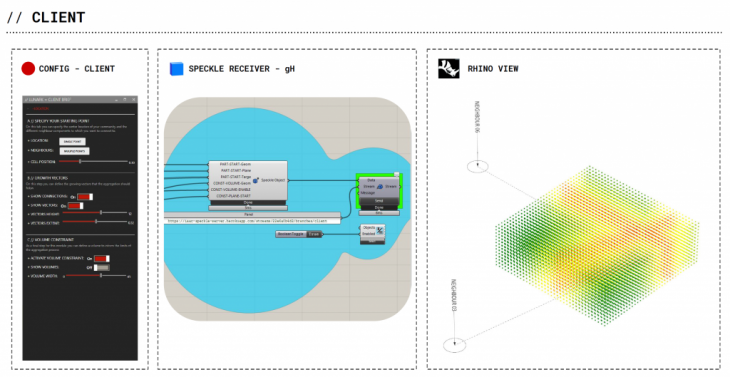
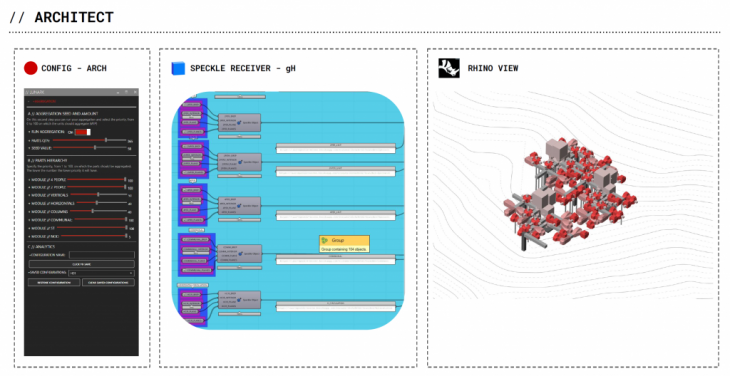
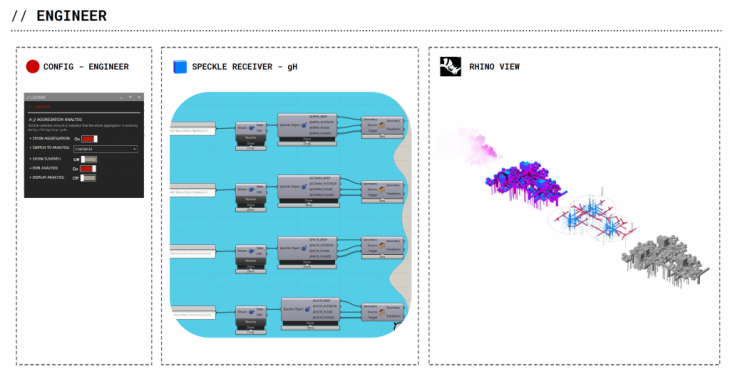
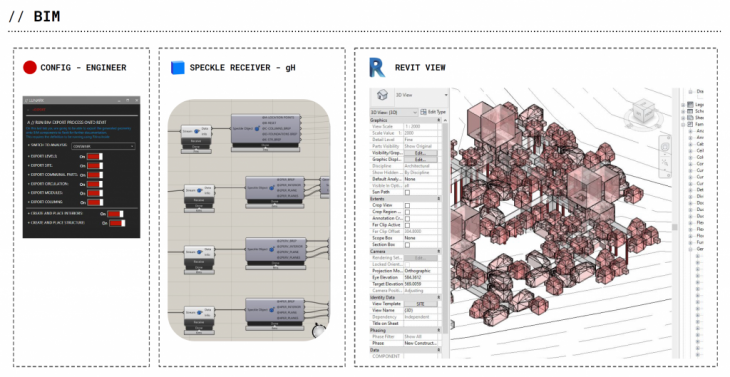
// Entity Diagrams of the Moving Data
The system that we have created for the Luna-One Residence can cater to changes and moving information. These entity diagrams below are provided and kept up to date to map out the data flow, keeping everyone informed of the data they will be receiving and the data they need to provide for the next person.
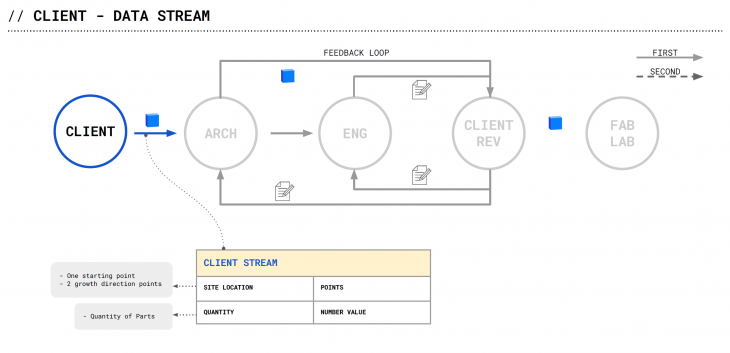
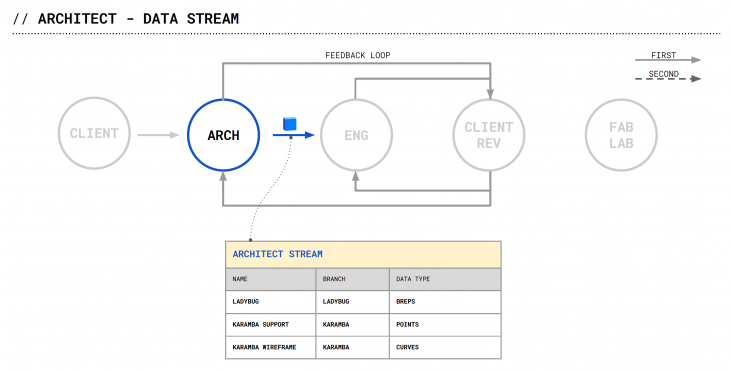
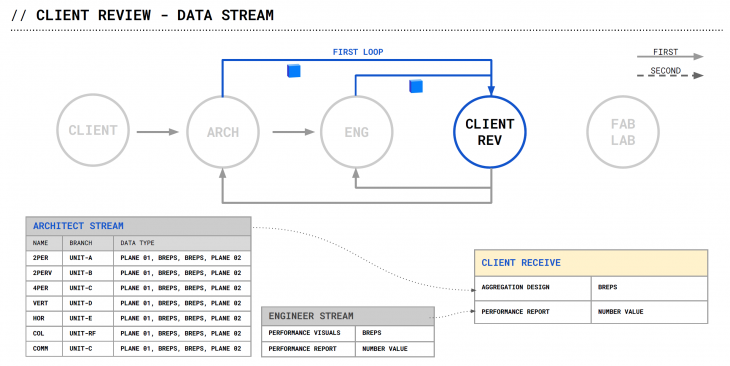
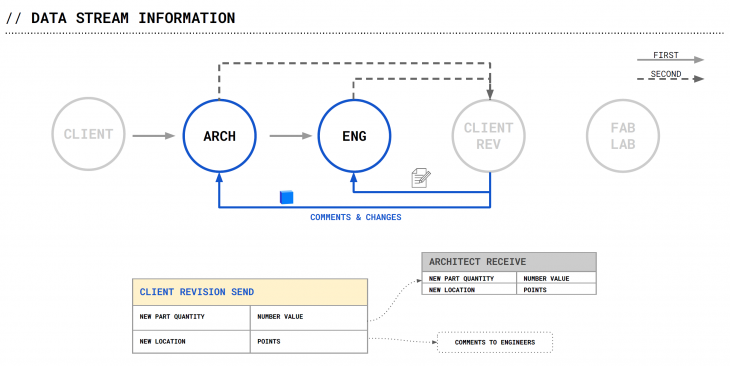
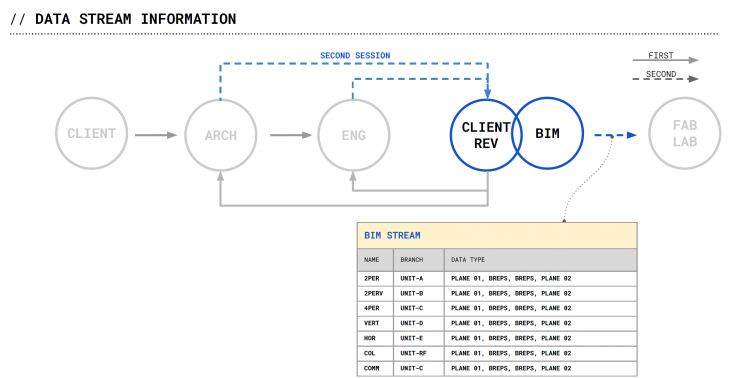
‘Lunar Residence: Collaborative Design Workflow’ is a project of IAAC, Institute for Advanced Architecture of Catalonia developed in the Masters of Advanced Computation for Architecture & Design 2020/21 by Student: Marissa Ridzuan, German Bodenbender & Hesham Shawqy and Faculty: Alan Rynne & Noelia Rodriguez